Excavation is about to get underway for the Gowanus Canal Combined Sewer Overflow Facilities project, a wastewater retention complex spanning three properties at 242 and 270 Nevins Streets and 234 Butler Street in Gowanus, Brooklyn. Designed by Selldorf Architects and managed by the NYC Department of Environmental Protection (DEP), the development will consist of a two-story head house with underground water retention tanks and a 1.6-acre public park with landscaping by DLAND Studio. Hazen and Sawyer, and Brown and Caldwell are engineering consultants and Gowanus Canal Constructors is the general contractor for the project, which occupies a full block bound by Butler Street to the north, DeGraw Street to the south, Nevins Street to the east, and the Gowanus Canal to the west.
Recent photographs show the property cleared of its former low-rise industrial occupants. Several excavators, piling machines, trucks, shipping containers, and other various materials are positioned on the northern half of the development, where the head house will eventually rise.
The opposite southern end is completely leveled and covered with a layer of gravel.
The park will cover nearly two-thirds of the plot and feature trees, lawns, sculptural seating, garden beds, winding pathways, and a public esplanade along the Gowanus Canal.
The head house will be situated at the corner of Nevins and Butler Streets and is shown with a façade of red terracotta louvers to facilitate ventilation. Critical equipment will sit 15 feet above the water level, and high-efficiency machinery and photovoltaic panels capable of generating 30kW of electricity will cover the roof. The facility will also incorporate five odor control systems.
Digital displays with shaded canopies will line the sidewalks and present information on the Gowanus neighborhood, the facility, and the DEP. The NYC Department of Parks and Recreation will maintain the park, which will also feature an ADA-accessible ramp along Nevins Street next to the main staircase.
The retention component will consist of nine deep underground tanks with a combined capacity of 8 million gallons of sewage overflow for periods of extreme wet weather. After collection, the facility will pump the runoff to a wastewater treatment plant.
The nearest subway from the site is the R train at the Union Street station to the east along 4th Avenue.
The Gowanus Canal CSO facility’s anticipated completion date is slated for February 2027, as noted on site.
Subscribe to YIMBY’s daily e-mail
Follow YIMBYgram for real-time photo updates
Like YIMBY on Facebook
Follow YIMBY’s Twitter for the latest in YIMBYnews


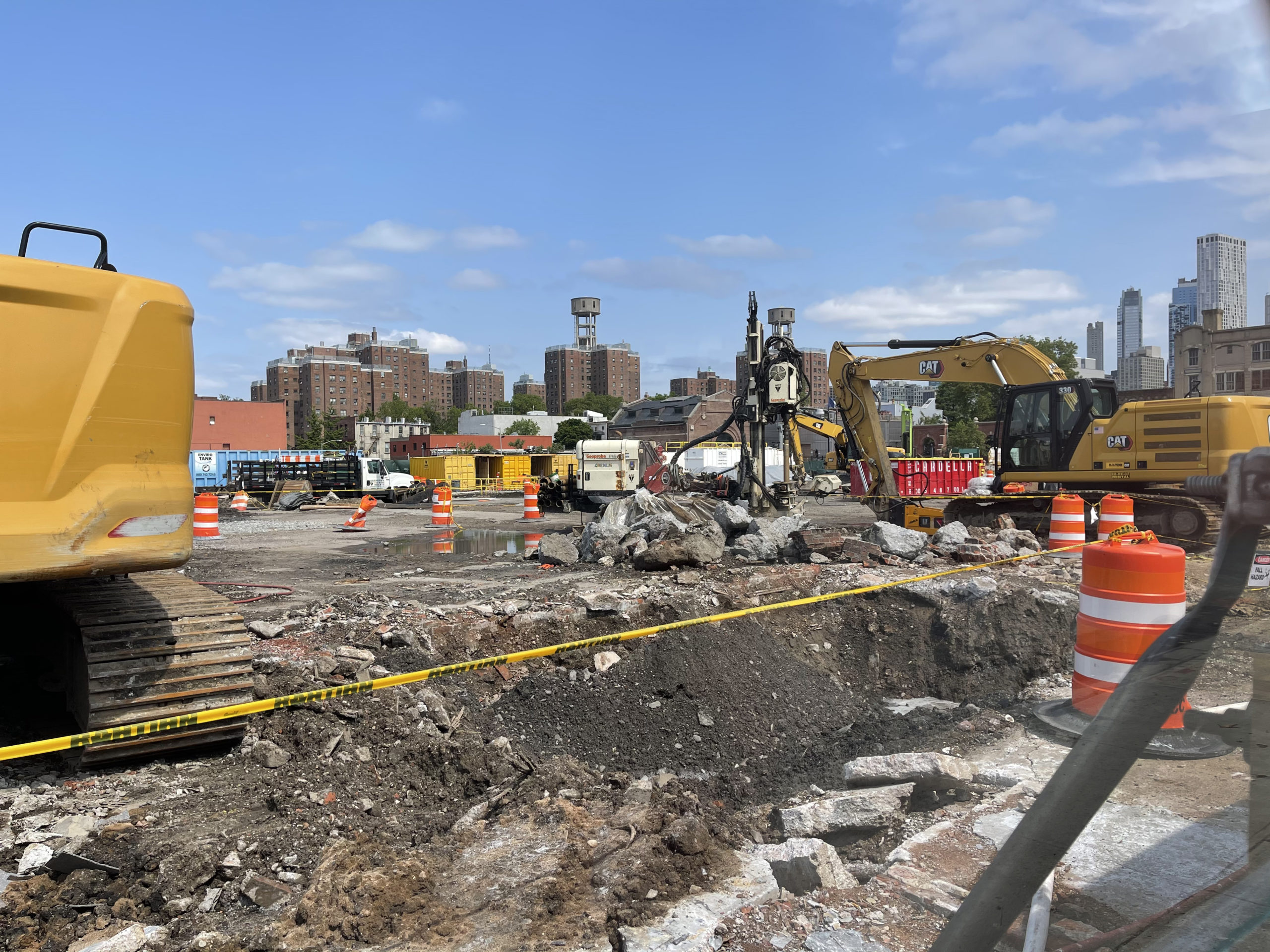
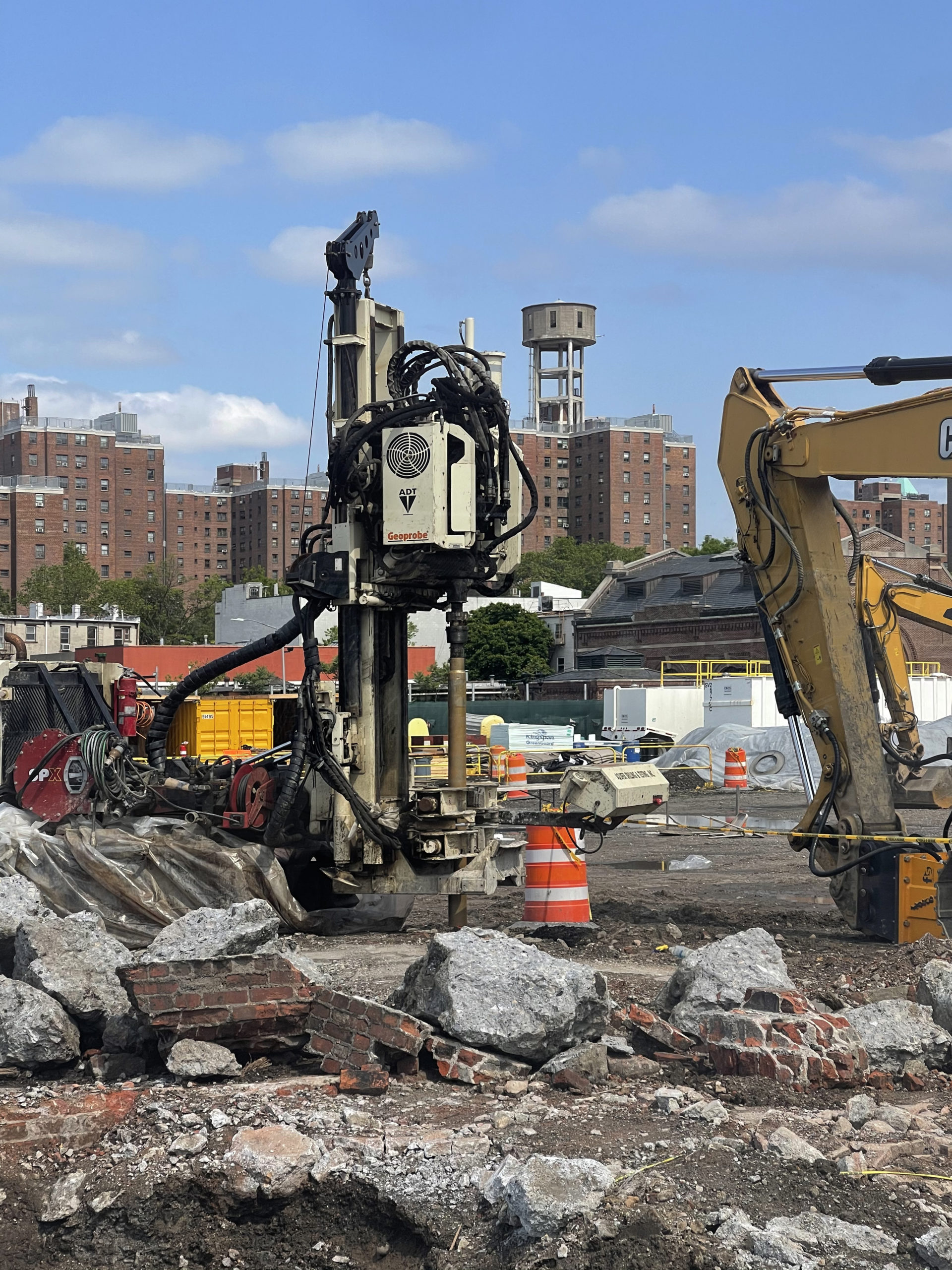

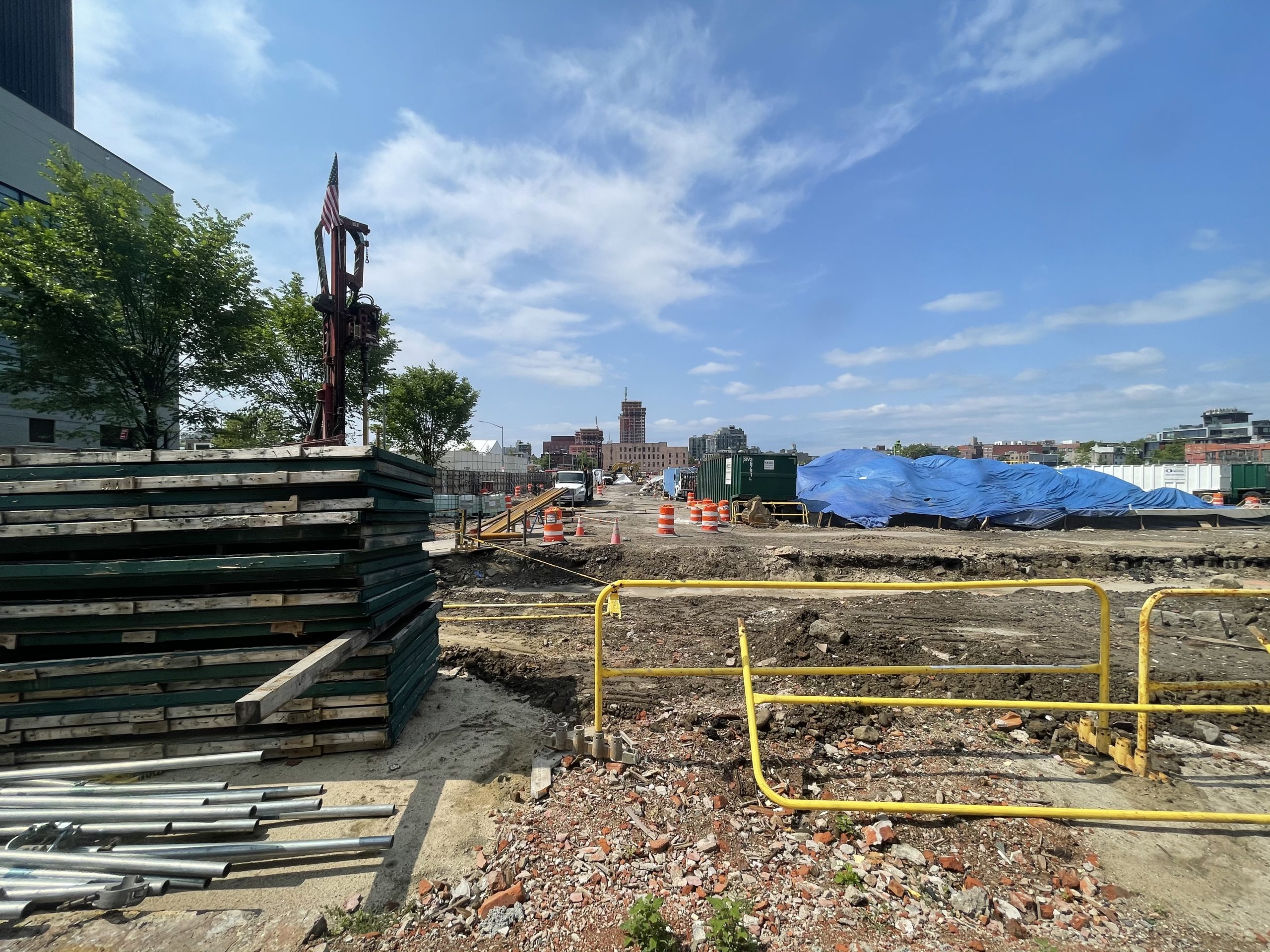
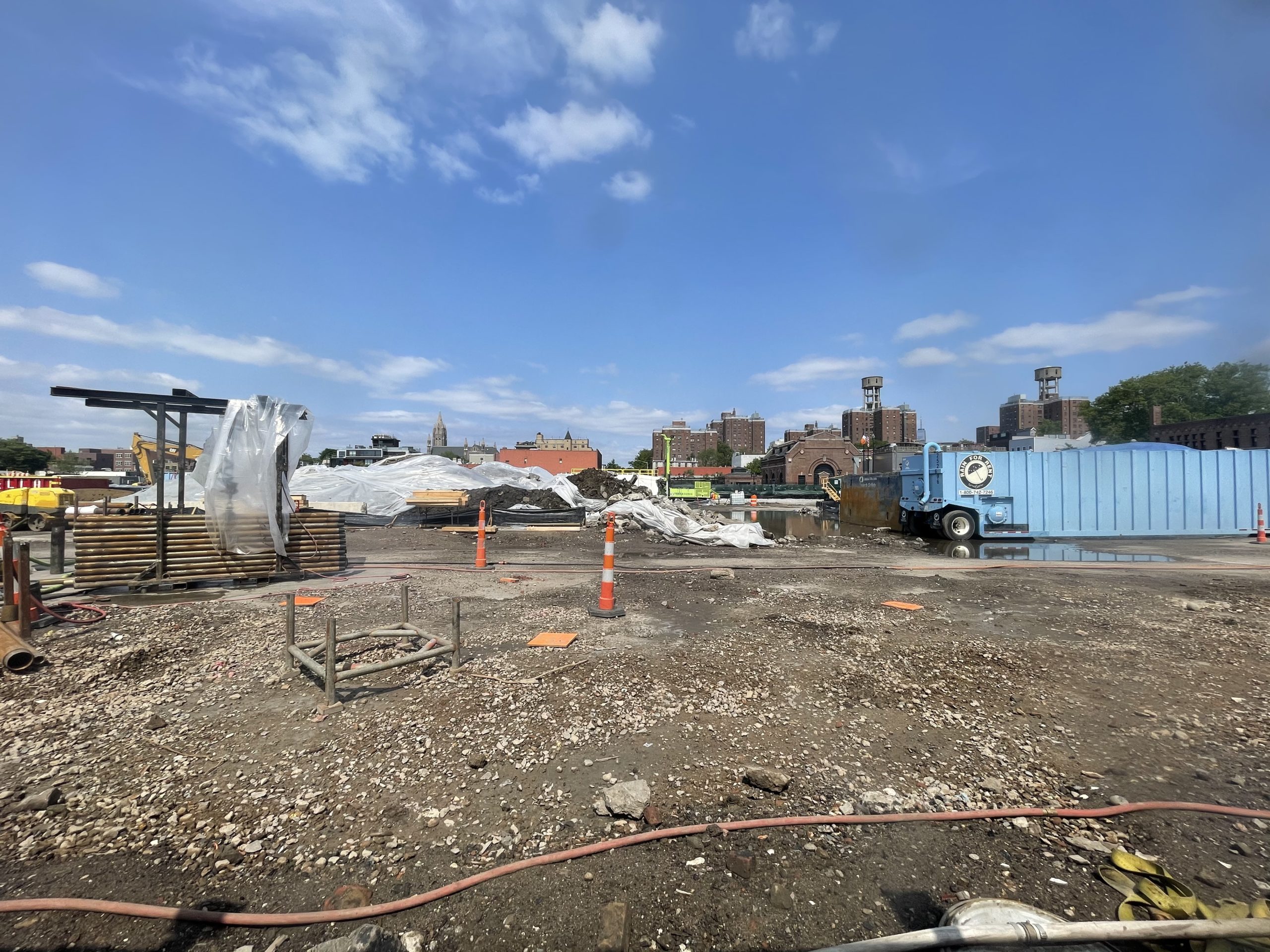




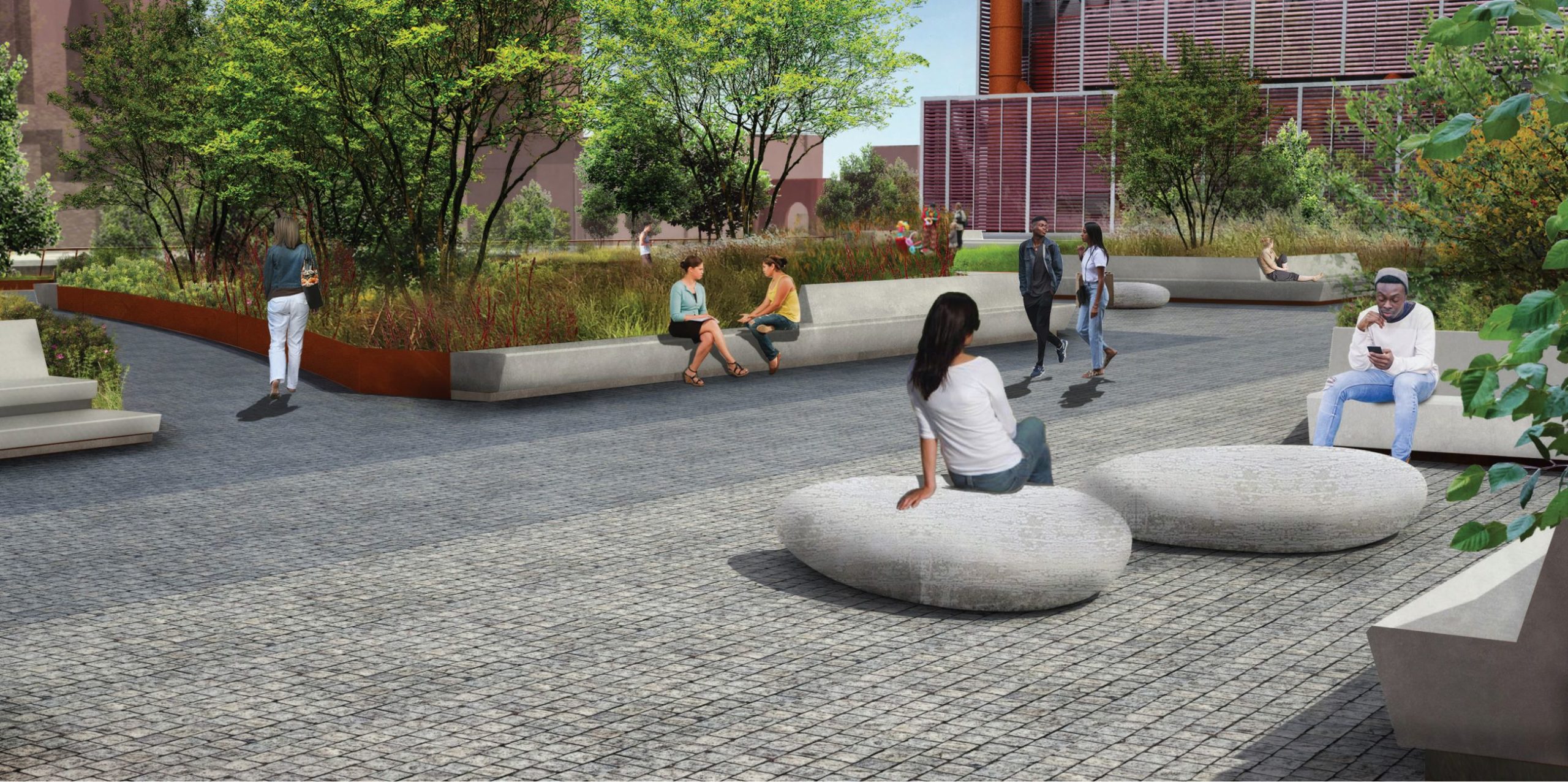



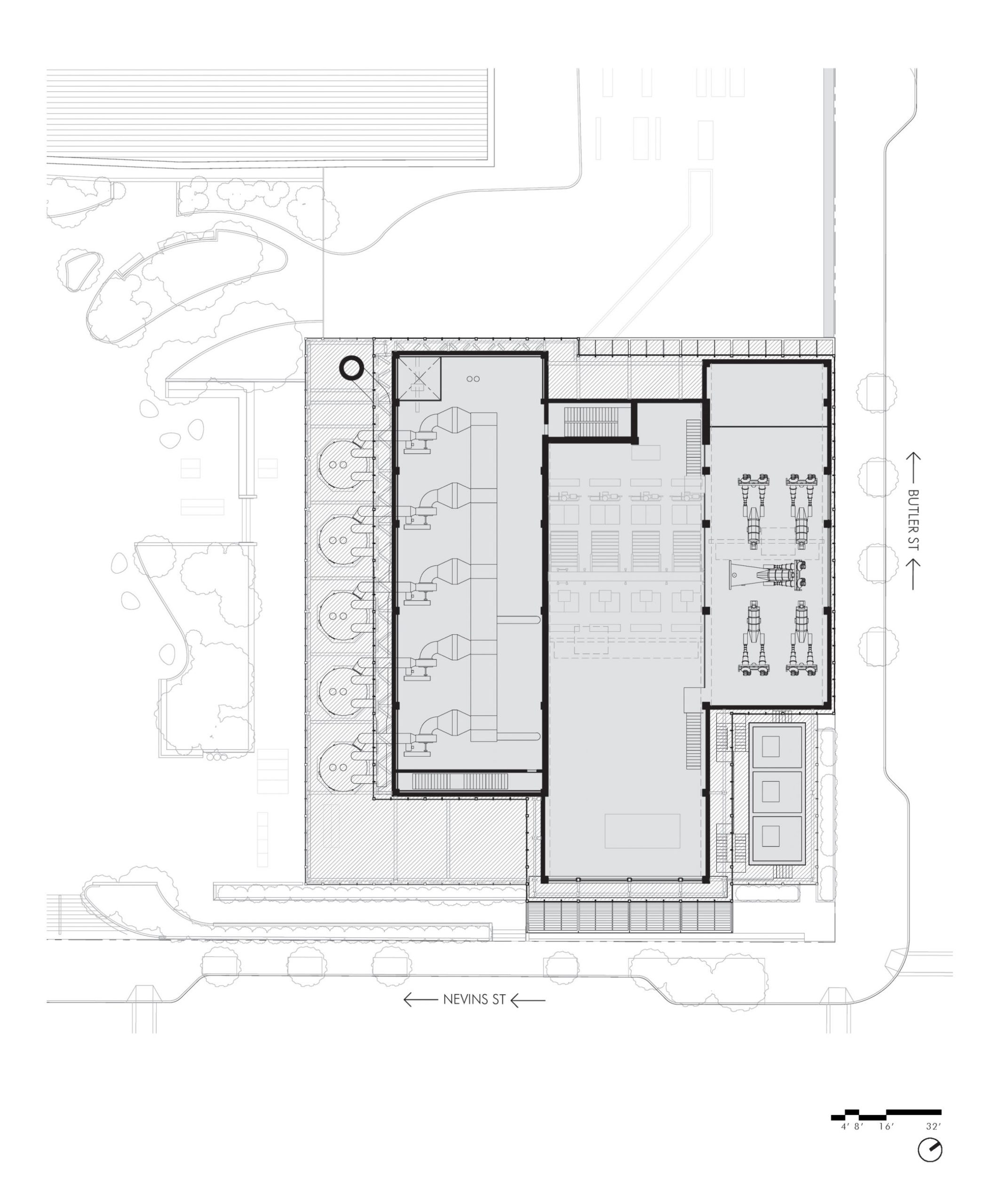
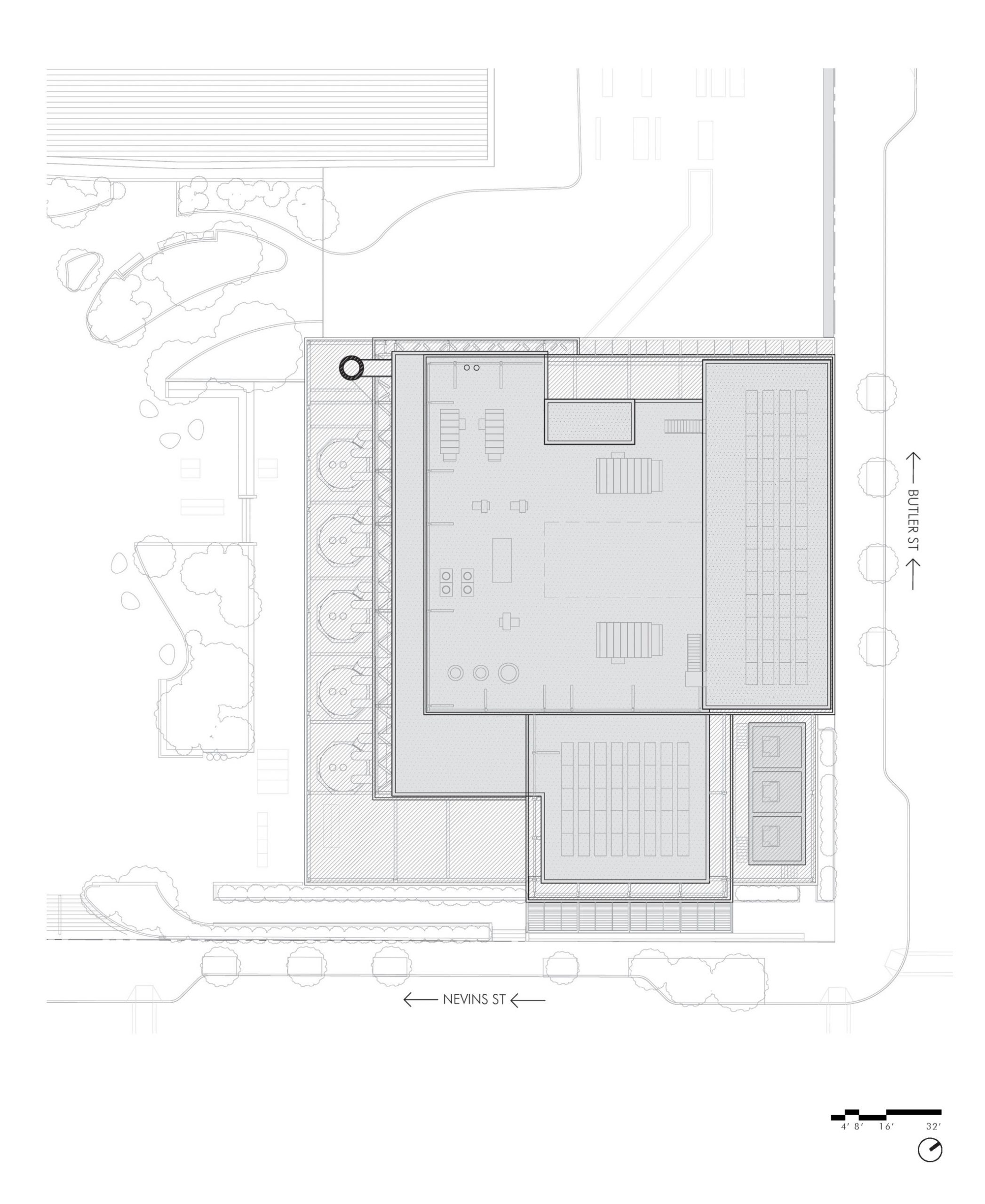



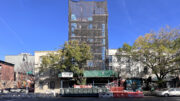

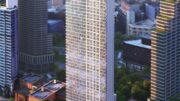
Waiting to read the “What’s Happening in Gowanus” post again… LOL
on its way
LOL
Very, very ambitious to show the water as blue in that section.
Re: Blue water. With a combine storm and waste sewer system like NYC has, the challenge is that during big storms or extremely rainy periods, the huge volume of storm water overwhelms the treatment facilities, causing the DEP to dump storm water mixed with raw untreated sewage into the public waterways. That’s when these temporary storage facilities will be used, so I assume that the water will be a high percentage of storm water…..so maybe not blue, but not the worst either.
$1.6B project to build sewage tanks beneath Gowanus Canal begins
BY REBECCA GREENBERG BROOKLYN
PUBLISHED 9:45 PM ET MAR. 16, 2023
A long-awaited groundbreaking was held Wednesday, setting in motion a $1.6 billion project beneath the heavily polluted Gowanus Canal.
“This groundbreaking is our way of continuing to move forward with the real challenges that we are facing storm after storm, year after year, and how we come up with effective solutions,” said Mayor Eric Adams on Wednesday as he and the federal Environmental Protect Agency marked the start of a $1.6 billion project to clean the Gowanus Canal.
Construction has officially begun on the first of two tanks that will be able to hold a combined 12 million gallons of wastewater.
The goal is to prevent severe flooding and further pollution of the canal.
“These storms are going to continue coming. Climate change is here and the storms are going to become more frequent,” said Martin Bisi, a local business owner and member of the grassroots organization Voice of Gowanus. He says the city’s $1.6-billion-dollar project falls short.
“It’s not enough to take care of the environmental problems in Gowanus,” said Bisi. “It does not address the profound contamination that we have in the sites around the canal.”
Gowanus has seen a surge in residents in recent years and thousands more are expected to arrive in the near future The Gowanus rezoning, which was approved in 2021, will add roughly 8,000 new housing units to the neighborhood.
“These tanks won’t be built until 2030 and in the meantime, they’ll continue building this housing that will bring more residents in and tens of thousands of toilets, and right now it doesn’t take much rain for the sewer system to go over capacity,” said Bisi.
This project follows a years-long struggle to clean up the canal after the Environmental Protection Agency designated it a “Superfund site” in 2010.
Bisi says the only way to keep residents safe from harmful toxins is to restore the canal to pre-contamination conditions.
“Full comprehensive cleanup of all of the worst sites and there’s many of them. There’s up to 30. And of course, that means halting construction on those sites fully,” he said.
Guesser switching sides of the argument and now finally acknowledging the construction of these underground retention tanks, after seeing post after post of the same copy and paste text claiming it’s not being built..
These tanks won’t be built until 2030 and in the meantime, they’ll continue building this housing that will bring more residents in and tens of thousands of toilets, and right now it doesn’t take much rain for the sewer system to go over capacity,” said Bisi.
This project follows a years-long struggle to clean up the canal after the Environmental Protection Agency designated it a “Superfund site” in 2010.
Bisi says the only way to keep residents safe from harmful toxins is to restore the canal to pre-contamination conditions.
“Full comprehensive cleanup of all of the worst sites and there’s many of them. There’s up to 30. And of course, that means halting construction on those sites fully,” he said.
Nine deep underground tanks with a combined capacity of 8 million gallons, to deal development on a wastewater treatment plant. No more and no less that I want to know a just environment, that deserving design such as the park space and seating around the head house: Thanks to Michael Young.
So gross.
Isn’t the Gowanus Canal still a Superfund site that’s dangerously toxic? How can bringing in so many people to live, work, and play there be a healthy idea?
Please read Brooklyn Magazine’s own recap here:
“Brooklyn Magazine: Two Months After News About Indoor Air Pollution in Gowanus Area, Questions Linger”
In response to a statement in the article made by Royal Palms co-owner, Jonathan Schnapp,
Do we appreciate being called “pseudoscientists peddling misinformation to the detriment of our community”? No, no we do not. It’s precisely why we hired experts like Walter Hang of Toxics Targeting.
The irony is, when Joseph confronted the Executive Deputy Director of the State DEC, Sean Mahar, on his credentials as a scientist, Sean, with a minor in Biology from Siena college, argued that he knows best for Brooklyn.
Well, this looks promising,hopefully this will clean those toxins in the canal,which we all hope? For the better of the people who will live in that area, I will try to be optimistic
don’t be optimistic.
They can never ever clean it up so there will be no toxins.
That’s why it’s a superfund site
The Gowanus Canal is such a unique issue. It runs 1.8 miles inland, with several smaller arteries, and absolutely no wetlands anywhere near it. It’s surrounded by light/heavy industry and all of the surrounding land is capped with development. Man, poor thing never had a chance. I recently started looking at it from an aquarist’s perspective. If it was my aquarium, how would I go about improving its condition…
The first thing I’d do would be to try and stop the runoff from the surrounding area. The new plans have that covered. The next thing would be to figure out a way to get fresh water in, and stale water out. I at first thought of a new tunnel/pipe from the East River to the end of the canal at Butler St. With an inlet somewhere near the Navy Yard, it’d be tidal, and wouldn’t need any power. But that’s probably not feasible.
So my other idea from a few minutes ago was to pump water in from the East River. Ideally from somewhere outside of Erie Basin, though pipes on the canal floor, and out through aerating heads at the end of the canal and the three side legs around 6th St. This would create a continuous pass though of water that would help fight the bad water conditions that are created in the canal.
Gowanus 101
What’s Happening in Gowanus?
The Canal
The Gowanus Canal Was Designated a “Superfund Site”
For over a century, the banks of the Gowanus Canal were line with industry and manufacturing companies, which released their toxic waste into the canal water as well into the ground. In 2010, the federal government identified the Gowanus Canal as one of the most toxic waterways in the entire country. It’s filled with toxins that pose serious public health risks. As a result, it was designated a “Superfund” site, and in 2020, the Environmental Protection Agency began a $1.5 billion cleanup of the canal.
The Land
The Gowanus Neighborhood Has Been Rezoned
In 2021, 82 blocks in Gowanus were changed from mainly industrial use to allowing residential development. The existing industrial buildings being demolished in the neighborhood will soon be replaced by dozens of apartment towers reaching up to 30 stories tall.
Most of the Rezoned Land is Highly Toxic
The vast majority of development sites in Gowanus (see map, below) are filled with cancer-causing toxins due to a century of industrial use, and have been classified by NY State as “Brownfield sites.” Some have toxins as deep as 150 feet.
The Infrastructure
Sewage Frequently Flows Into the Canal
During heavy rains, raw sewage flows into the canal because it exceeds the current sewer system’s capacity. As a result, the EPA has demanded that the City build two enormous “retention” tanks to keep excess sewage from going into the canal.
What’s The Problem?
The Land is Not Being Cleaned Up Fully, Leaving Toxins in the Soil
All of these sites need to be cleaned up before residential buildings can be built. State law requires they be cleaned to “pre-disposal conditions”—as they were before industrial poisoning. However, this is NOT happening. For instance, at some sites, where toxins reach as deep as 150 feet, the State is only calling for developers to clean less than the top 8 feet of contaminated soil.
Toxins Left in the Soil Can Enter Buildings And Threaten Future Residents’ Health
The State itself acknowledges that when certain toxins (“volatile organic compounds” or VOCs) are left in the soil, they can “move into buildings and affect the indoor air quality.”
Rather than remove them entirely, the State has decided that on the development sites, these toxins will be covered, or “capped,” with a slab of concrete. This method of dealing with toxic land, known as creating a “vapor intrusion barrier,” is very risky, and is so unreliable that these sites must be monitored every year, in perpetuity, to ensure that dangerous vapors haven’t penetrated people’s residences.
The Most Deeply-Affordable Housing Is Planned for the Most Seriously Toxic Site
Some of the worst contamination can be found at “Public Place,” a City-owned plot at the corner of Smith and Fifth Streets which for decades housed a manufactured gas plant that created waste known as “coal tar.” Exposure to coal tar has been linked to a variety of cancers. Coal tar at this site has been found to a depth of 150 feet.
The cleanup proposed for this site is woefully inadequate, and only the top 8 feet of soil will be cleaned. It is also the only site in the entire rezone where 100% of the 950 apartments target lower incomes, including units for unhoused individuals and seniors. A school has also been proposed for this site.
Placing the lowest-income residents in danger in this way raises Environmental Justice concerns.
Toxins Are Not Confined To Their Original Sites and Threaten the Health of Existing and Future Residents
Large “plumes” of migrating carcinogenic coal tar have already been found far from their original site in Gowanus, and with flooding and rising groundwater levels from climate change, these and other carcinogens can wind up underneath existing homes and intrude into them.
Fumes from the Toxic Construction Sites Pose a Danger to the Community
The disturbance of the land at these toxic construction sites has caused air monitors to be set off by toxic fumes reaching dangerously high levels, with the community not notified and only discovered after kids in the neighboring playground smelled it and reported it to our electeds.
The Gowanus Canal will be Re-Contaminated With Toxins
Without a full cleanup, toxins from the sites surrounding the canal will seep right back into the canal and re-contaminate it, thereby not only wasting $1.5 billion in taxpayer dollars, but also returning the canal to its dangerously toxic state.
Sewage Retention Tanks Are Not Being Built, and Sewage will continue to flow into the canal—and into our homes
The City is not following the EPA’s timeline to build the required retention tanks, and at this point says that they won’t be complete until after 2030. And the retention tanks are only meant to deal with the current number of residents in the community; they don’t take into account the additional sewage that will be produced by 20,000 planned future residents.
Without the required retention tanks, and given increases in rainfall as a result of climate change, sewage will (and has) backed up into people’s homes.
What Can I Do?
Join the efforts of Voice of Gowanus, and sign up for our email alerts to keep up to date on what’s going on.
We’re working to ensure a complete cleanup of the toxic development sites in Gowanus to protect current and future residents, by demanding that Gov. Kathy Hochul guarantee that these sites be cleaned according to State law.
@James
I don’t know what the hydro-engineering solution is, but yes that water needs to start moving. Nothing worse than putrid stagnant water. Perhaps just some sort of jet like in a wave pool… Just enough to get movement. Could possibly be powered a tidal/current turbine in East River so it is energy “neutral” ???
from NY Post
METRO
DEC took 2 years to warn of toxic vapors at Gowanus shuffleboard club
By Rich Calder
March 18, 2023 12:52pm Updated
Interior of the Royal Palms.
The Royal Palms, is a popular a shuffleboard court with a bar and restaurant in Gowanus.
State environmental officials waited nearly two years to alert the public that cancer-causing vapors over 20 times the amount considered safe escaped from polluted soil along the Gowanus Canal — and into a nearby shuffleboard club.
The Department of Environmental Conservation learned of the alarming levels of toxic vapors in March 2021 while conducting air-quality tests inside Royal Palms Shuffleboard Club — but the hipster haven remained open throughout, since the agency deemed the century-old building was “safe.”
The agency only documented the stunning finding late last year in public records buried on its website.
On Friday, DEC spokeswoman Haley Viccaro admitted to The Post that it could have done a better job alerting locals to the looming health hazard, and “are evaluating potential improvements to enhance this process and ensure this information is clear and informative of these comprehensive, science-based efforts to protect public health.”
Jonathan Schnapp.
Co-owner Jonathan Schnapp said the club has remained open because DEC assured him it’s safe.
The news came as a gut punch to Gowanus residents now battling cancer.
“I can pretty much draw a line to where I’m living to why I have cancer,” said Margaret Maugenest, 71, a longtime resident who lives a block away from the club. She was diagnosed with colon cancer in 2019.
“There’s no history of cancer in my family; I eat well; I have a healthy lifestyle, and yet I get colon cancer and am reading about all these cancer-causing materials in the soil we are surrounded by,” she added.
The Gowanus Canal is one of the nation’s most polluted waterways
The revelations only came to light thanks to the grassroots group Voice of Gowanus, which hired an Ithaca, N.Y.-based environmental database firm, Toxics Targeting, that recently discovered the damning DEC documents.
The records showed March 2021 air levels of the cancer-causing chemical trichloroethylene, an industrial solvent, were nearly 22 times above acceptable levels at the shuffleboard club.
“The DEC in 2021 should’ve put up signs in the club, published public notices in local papers, and sent mail alerts to people in the neighborhood,” said Walter Hang, who heads Toxics Targeting. “All they did was make obscure references in dense technical documents regular citizens wouldn’t know about or can’t decipher.”
Margaret Maugenest, 71, a longtime Gowanus resident who lives a block away from the Royal Palms Shuffleboard club who was diagnosed with colon cancer in 2019.
A state-approved project is currently underway to reduce the fumes by venting out underground contaminants. Several follow-up tests over the past two years – including one in November — have since shown the hipster hotspot’s air quality at “safe” levels despite slight traces of trichloroethylene still remaining.
However, some longtime club patrons and workers fear their health might already be at risk because its unclear how long Royal Palms’ indoor air was toxic.
“I blame the state government 100%, but at this point I’m done going back there for my own personal safety – and it’s sad because I spent many nights there,” said a Park Slope resident who played in Royal Palms’ shuffleboard leagues since 2019.
Environmental laws in this country are so weak and hard to impose, and the fact that this went unnoticed for so long is an example of how weak they are,” the person added.
Royal Palms opened in 2014 at 514 Union Street, in a building previously used as a die-cutting factory. It’s one of many former manufacturing sites in the neighborhood whose underground soil is saturated with toxic coal tar, a byproduct of former businesses making coal gas.
Over the past century, much of the coal tar – dubbed “black mayonnaise” by longtime residents — also seeped into the Gowanus Canal, which is one of the nation’s most polluted waterways and undergoing a massive federal cleanup.
Royal Palms opened in 2014.
The DEC learned Royal Palms had air-quality issues after the building’s owners, Avery Hall Investments, applied for financial aid in early 2021 through the state’ Brownfield Cleanup Program to move ahead with a larger mixed-use development with housing on adjacent property it owns.
Local residents, however, said they didn’t become aware until the site’s remediation plan was updated in December and DEC sent out fact sheets in an email blast many of them didn’t get.
Royal Palms co-owner Jonathan Schnapp said the club has remained open because DEC assured him it’s safe.
“We’re not scientists, and we’re not experts, but we trusted the DEC; we continue to trust the DEC, and we would never do anything to put our staff or our community at risk,” said Schnapp, adding the club recently signed a lease extension to remain in business through at least 2033.
Viccaro said the DEC “did not have information of potential for contamination” until the site’s owner was accepted into the state cleanup program because there’s “currently no requirements” to test indoor air. She called the mitigation system at Royal Palms “effective.”
However, Hang and many Gowanus residents said the cleanup project doesn’t go far enough because it doesn’t entirely purify the toxic soil lurking underneath and around the building — only some of it.
“The state needs to start proactively remediating sites like this around here immediately,” said Seth Hillinger, a 46-year-old software developer who lives nearby and occasionally frequents Royal Palms.
“This shouldn’t only be a warning flag for this business, but the plenty of others built along toxic sites along the canal.”
Some years ago, a similar facility was constructed in Flushing to deal with sewage overflows during heavy rain. This was underground and a huge athletic field was placed atop it. Unfortunately, Flushing Creek where the drainage went has not been sufficiently dredged and there are unpleasant odors at low tide, especially in summer. A retention facility is only part of the solution.
My building was constructed in the 1950s with separate drainage systems for waste and roof water. They join at the street as only the sanitary sewer was constructed.